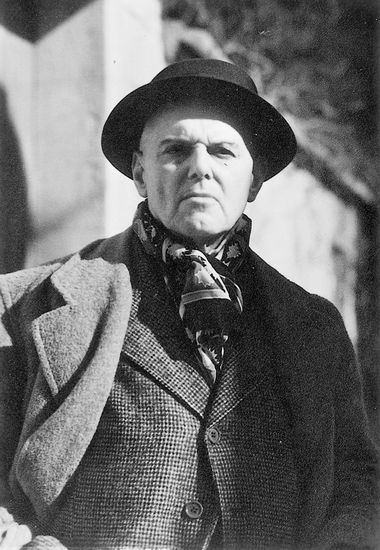Name Pierre Orlan | Role Novelist | |
 | ||
Died June 27, 1970, Saint-Cyr-sur-Morin, France Movies Port of Shadows, Marguerite of the Night Books Les clients du bon chien jau, L'Ancre de misericorde, A Handbook for the Pe, La Bandera, Le quai des brumes Similar People Marcel Carne, Jean‑Jacques Pauvert, Leo Ferre, Jacques Prevert, Claude Autant‑Lara | ||
Pierre Mac Orlan & Francis Carco 6 chansons de soldats (1950)
Pierre Mac Orlan, sometimes written MacOrlan (born Pierre Dumarchey, February 26, 1882 – June 27, 1970), was a French novelist and songwriter.
Contents
- Pierre Mac Orlan Francis Carco 6 chansons de soldats 1950
- Pierre berg raconte pierre mac orlan
- Life
- Works
- Influences and legacy
- References
His novel Quai des Brumes was the source for Marcel Carne's 1938 film of the same name, starring Jean Gabin. He was also a prolific writer of chansons, many of which were recorded and popularized by French singers such as Juliette Greco, Monique Morelli, Catherine Sauvage, and Germaine Montero.
Pierre berg raconte pierre mac orlan
Life

Born in Peronne, Somme, in northern France, Mac Orlan lived in Rouen and Paris as a young man, working at a variety of jobs and learning to play the accordion. In his twenties, he travelled widely in Europe, before returning to Paris and becoming a noted figure in Bohemian art circles. In particular, his song performances were a regular feature at the Lapin Agile cabaret. During this period, he was part of a broad circle of writers and painters including Max Jacob, Guillaume Apollinaire, Maurice Utrillo and Francis Carco.

He fought in the war against Germany until wounded in 1916, after which he worked as a war correspondent. In later years he earned a living as a writer in Saint Cyr-sur-Morin, outside Paris. In the late 1920s he became an influential critic of film and photography, writing important essays about the work of Eugene Atget, Germaine Krull and others.
Works
In addition to Quai des Brumes, his many novels included A Bord de l'Etoile Matutine, translated into English by Malcolm Cowley as On Board the Morning Star, and La Bandera (1931). Among the popular chansons written by Mac Orlan are "Fille de Londres", "Le Pont du Nord" and "Nelly". The French singer Germaine Montero released an extensive set of her interpretations of Mac Orlan songs on the CD Meilleur de Germaine Montero.
Using his real name, Pierre Dumarchey, and various pseudonyms including: Docteur Fowler, Pierre du Bourdel, Pierre de Jusange, Sadie Blackeyes, Chevalier de X, and Sadinet, he was for several years a writer of pornographic novels, which frequently depicted flagellation and sado-masochism. These titles include: La Comtesse au fouet (1908), the story of a cruel dominatrix, Les Grandes Flagellees de l'histoire (1909), Lise Fessee (1910), Masochism in America (1910), Miss (1912), and Petite dactylo et autres textes de flagellation (1913). He told Pascal Pia that he used the Dumarchey name to upset an uncle of his who made his life hard.
Influences and legacy
The French writer and political theorist Guy Debord, founder of the Situationist International was a constant reader of Mac Orlan's novels of urban adventure and "low life". The well-known photographer of New York in the 1930s Berenice Abbott was highly influenced by Mac Orlan's writings on the "fantastique" and the "social fantastique". The physicist Freeman Dyson, in his 2008 AMS Albert Einstein Lecture, interprets MacOrlan's song "La Ville Morte" ("The Dead City") as an example of the "empty city archetype", a Jungian archetype as described by mathematician Yuri I. Manin.
